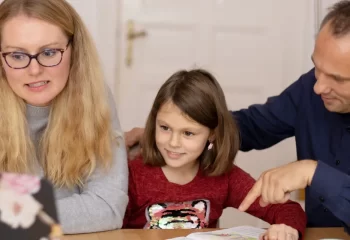Education is the means for students to acquire the needed knowledge and skills to help them in the future. It is one of the things in their lives that can help shape their paths. To make a difference and help create the future of this world, educational practices should start in secondary and even in primary education.
Nowadays, everything moves and develops faster, increasing the need to update the education system.
The education system needs to prepare students for a successful life in a globalized world. What we need to think about nowadays is what and how we learn.
Choosing the right “what” and the right “how” that engages students is critical.
What does education need?
It is not just about updating the materials and the courses. It is about the entire approach to education.
We are constantly seeing how technology and the environment are changing, having a significant effect on economics. That means new skills are required for the working environment, which can only be acquired through education.
Education needs to prepare youngsters for future challenges. This is one way to avoid problems in the future of employment and the economy.
However, education cannot know what changes will appear in the future, so it needs to prepare students to adapt to changes, be flexible, constantly learn, and desire to grow.
A Fit for Future Education
What does fit mean, and what are the main fits a person needs to tick as a global citizen able to take on the world’s challenges and give a helping hand?
One needs to grow and be:
The right person at the right job
The right person in the right organization
The right person for the future development of the society
Each of the above requires awareness of today’s global problems, the responsibility to take on challenges, have the flexibility to adapt to whatever comes, and the resilience to handle what we cannot control about the future.
Education needs to think new and prepare students for a future they do not know. The uncertainty that today’s students must embrace makes us vulnerable at the moment. Moreover, education needs to nurture qualities in students that help encourage sustainable development.
Fit for Future Education at Spark
Here we try to create the environment students need to grow.
We just cannot know what the future holds and prepare to respond precisely to those problems. However, we know that for that future to exist, certain conditions will not change, and those are cultural diversity, sustainability, empathy, and peace.
We try to make sure that the education path at Spark School prepares students for fit for the future by studying and actively practising the above dimensions.
“All dimensions, which require pedagogic decisions in the preparation of teaching are to take into account the political, social, economic and cultural contexts and conditions” (Klafki 1991, p. 116).
The educational path that a student has had since they were young is very important for the growth of an adult. Our education is committed to critical thinking development, accessibility to real-world issues and the chance to help, understanding what world citizenship means in this globalized world and how to be united, realising the complexities of globalisation and accepting them.
No one can attain all the above without self-awareness.
This is where Spark comes in and helps students find themselves and discover their passions through our WHOLE child development approach of education. We allow them to fail, learn from mistakes, take on responsibilities, face challenges, grow, empathise with others, be a part of a global world, commit and communicate. All of these while we are there for them every step of the way, offering our support.
Steps into a fit for future education
There is a real need for the learning system to grow at least simultaneously with technology, as it cannot grow faster.
Anyhow, education needs to keep up at least. What education needs to be fit for future is to adopt a holistic approach that allows it to review the courses and adapt its pedagogical style to current thinking and the needs of society.
In June 2021, the European Training Foundation and UNESCO, in cooperation with the International Labour Organization, the European Bank for Reconstruction and Development, and UNICEF held an online conference about “Building lifelong learning systems: skills for green and inclusive societies in the digital era“.
It was a great opportunity to showcase the progress education made into being fit for current and future challenges and readjusting the priorities accordingly, taking into consideration the global challenges.
It focused on thinking and brainstorming how to build lifelong learning systems that will create new forms of learning, monitor the changes, ensure skills for each citizen, and create new forms of learning while making sure the green transition is cared for.
Conclusion
Each step we make towards a fit for future education should take into consideration all aspects of today.
Despite technological advancement and the world spinning faster than we can relate to, there actually are children all across the globe that do not have access to any education, let alone a fit for future one, one that can prepare them for the future of tomorrow.
This is why education departments, governments, and anyone who wants to get involved should make sure all – access to sustainability, community, culture, development of WHOLE, freedom, opportunities, challenges – are available to the most disadvantaged children.
A fit for future education is a global concept where we are all a community. So, along with choosing the proper education for your child, think of how to help the other millions of children who do not have access to any type of education. In creating and sustaining a fit for future education, let’s not dive into a bigger education gap between those that have opportunities and those that don’t. Let’s try first to bring a fit for future education to as many disadvantaged children as possible.
Stay united and think of a fit for future education in a globalised world where we can all have access to education. Sustainability, diversity, equality, peace is all we need to work towards creating a fit for future education.




